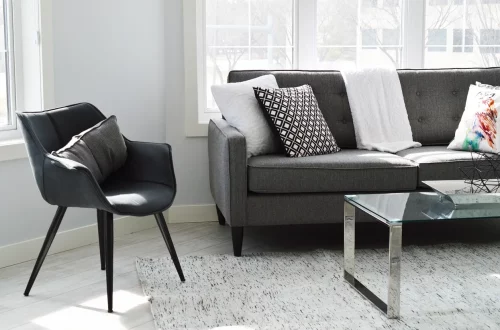
Choosing the Perfect Foal Halter for Your Young Horse
Choosing a new halter for your foal can be an overwhelming task, especially for first-time horse owners. The right halter is not just a piece of equipment; it plays a crucial role in the early development and training of your young horse. From fitting and comfort to durability and style, several factors come into play when selecting the perfect halter for your foal.
Foals are naturally curious and full of energy, which means that their halters need to be robust enough to withstand some rough handling while also being comfortable enough to allow for natural movement. The right halter should provide the necessary control without causing any discomfort or restricting the foal’s growth. Additionally, as your foal grows, its halter needs may change, requiring you to adapt your choices accordingly.
Understanding the various materials and designs available can significantly impact your decision. A well-chosen halter not only helps in training and leading your foal but also enhances safety during handling. As you embark on this journey of selecting the best halter, consider the unique characteristics of your foal and your specific needs as a horse owner. This thoughtful approach will set the foundation for a trusting relationship between you and your young horse.
Understanding Halter Types and Their Features
When it comes to halters, there are several types available, each designed for specific purposes and levels of comfort. The most common types include nylon, leather, and rope halters. Each material has its own set of advantages and disadvantages, making it crucial to understand what each type can offer.
Nylon halters are popular due to their affordability and ease of maintenance. They come in various colors and patterns, which allows for some personalization. One of the significant advantages of nylon halters is their durability; they can withstand the wear and tear of daily use. However, it’s essential to ensure that the halter fits properly, as an ill-fitting nylon halter can cause chafing or discomfort.
Leather halters exude a classic look and are often seen as a more premium option. They provide a soft, comfortable fit for the foal and tend to be more forgiving on the skin. However, leather requires more maintenance than nylon and can be more expensive. Proper cleaning and conditioning are necessary to keep leather halters in good condition, especially in varying weather conditions.
Rope halters offer a unique combination of strength and sensitivity. They are made from thick ropes and are often used for training purposes. The design allows for even pressure distribution, which can be beneficial for training young horses. However, they may not be the best choice for long-term wear, as they can become abrasive if not used carefully.
Choosing the right halter type involves weighing the pros and cons of each material against your foal’s specific needs. Consider factors such as how frequently you will be using the halter, the climate in your area, and your budget. Remember, the right halter is an investment in your foal’s comfort and training.
Finding the Right Fit for Comfort and Safety
One of the most critical aspects of selecting a halter for your foal is ensuring a proper fit. A well-fitted halter will not only keep your foal comfortable but also prevent accidents and injuries. An ill-fitting halter can lead to chafing, rubbing, and even the potential for your foal to escape if the halter is too loose.
To measure your foal for a halter, start by using a soft measuring tape. Measure around the nose, just above the nostrils, and around the head, just behind the ears. These measurements will help you determine the appropriate size. Most halters come with size guides, which can assist in finding the right fit.
When trying on the halter, ensure that it is snug but not too tight. You should be able to fit two fingers between the halter and your foal’s skin comfortably. Pay special attention to the adjustment points; these are usually located at the crown and under the jaw. Proper adjustability is essential to accommodate your foal’s growth, as they can grow quickly in their early months.
Keep in mind that foals have sensitive skin, so materials that are soft and non-irritating are preferred. Additionally, halters with padded areas can provide additional comfort and reduce the risk of rubbing. As your foal grows, be prepared to adjust the halter regularly to ensure it remains safe and comfortable.
Ultimately, the right fit is about more than just size; it’s about ensuring that your foal can move freely and comfortably while also being secure during handling. Taking the time to find the perfect fit will pay off in the long run, making daily interactions with your foal more enjoyable and safer.
Durability and Maintenance Considerations
Durability is a key factor when choosing a halter for your foal. Young horses are often rambunctious and may engage in behaviors like playing or rolling, which can put a lot of stress on their equipment. Therefore, selecting a halter made from robust materials that can withstand wear and tear is essential.
Nylon halters are generally considered very durable, but not all nylon is created equal. Look for halters that are reinforced at stress points and made from high-quality nylon that resists fraying. Some manufacturers also offer halters with additional stitching for added strength.
If you opt for a leather halter, keep in mind that while they can be incredibly durable, they require regular maintenance to ensure longevity. Leather can dry out, crack, and lose its shape if not cared for properly. Regular conditioning and cleaning will help maintain its integrity and make it last much longer.
Rope halters generally provide good durability but can be susceptible to abrasions if they are not monitored carefully. It’s essential to check for wear and tear regularly, especially around areas that experience the most friction.
Maintaining your halter is just as important as selecting a durable one. Regular cleaning will prevent dirt and grime from building up, which can affect the material’s integrity as well as your foal’s comfort. Depending on the material, follow the manufacturer’s guidelines for cleaning. Nylon can typically be washed in warm soapy water, while leather may require special cleaners and conditioners.
In conclusion, durability and maintenance are crucial when selecting a halter for your foal. Investing in a high-quality halter and committing to its upkeep will ensure that your foal is comfortable and safe during their formative years.
Style and Personalization Options
While functionality and safety are paramount when choosing a halter for your foal, style and personalization also play a role. Many horse owners enjoy expressing their personalities and the unique characteristics of their horses through the equipment they choose.
Nylon halters come in a wide array of colors and patterns, allowing you to select something that reflects your style. You can find everything from classic solid colors to vibrant designs adorned with fun graphics. Personalization options, such as nameplates or embroidery, can add a unique touch and help identify your foal in a herd setting.
Leather halters can also be customized with nameplates, and while they may come in fewer colors than nylon, they offer a timeless elegance that many horse lovers appreciate. The rich tones of leather can complement your foal’s natural coloring beautifully.
Rope halters, while generally more functional, can also be found in various colors and styles. Some brands offer options for customizing the rope thickness or adding decorative knots, which can enhance both aesthetics and functionality.
When personalizing your halter, consider the long-term needs of your foal. If you anticipate significant growth or changes in their training, choose a style that can adapt to those needs while also reflecting your individuality.
Ultimately, while style and personalization can enhance your halter selection, remember that comfort and safety should always remain the top priorities. A well-chosen halter that looks great and feels comfortable will foster a positive relationship between you and your foal.
In summary, choosing the perfect foal halter involves understanding the different types of halters available, ensuring a proper fit, considering durability and maintenance, and exploring style and personalization options. By taking the time to assess each of these factors, you can select a halter that not only meets your foal’s needs but also enhances your overall experience as a horse owner.




